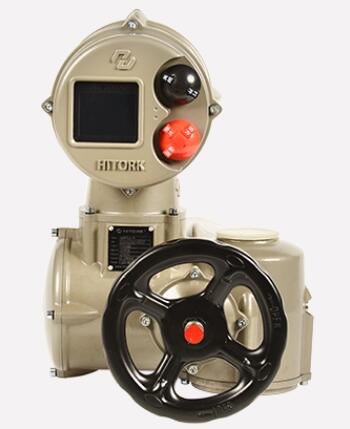The Electric Actuator: Revolutionizing Automation
In today's rapidly evolving industrial landscape, automation plays a pivotal role in enhancing productivity and efficiency. One of the key components driving this revolution is the electric actuator. This versatile device has transformed the way we control and manipulate various mechanisms, offering unprecedented precision, reliability, and flexibility. In this article, we delve into the intricacies of electric actuators, exploring their functionality, applications, and benefits.
Understanding Electric Actuators
An electric actuator is a mechanical device used to convert electrical energy into mechanical motion. Unlike their pneumatic or hydraulic counterparts, which rely on compressed air or fluid, electric actuators utilize electric motors to generate force and movement. This innovation brings forth a multitude of advantages, making electric actuators increasingly popular across industries.

Functionality and Types
Electric actuators boast a diverse range of functionalities, each catering to specific requirements. Let's explore some common types:
1. Linear Actuators
Linear actuators facilitate linear motion, transforming electrical energy into a straight-line displacement. They find extensive use in applications such as robotics, material handling, medical equipment, and industrial machinery. By offering precise control over movement, linear actuators contribute to enhanced accuracy and repeatability.
2. Rotary Actuators
Rotary actuators, on the other hand, convert electrical energy into rotary motion. They enable rotational movement along a fixed axis, making them ideal for tasks such as valve control, robotic arm articulation, and conveyor belt operation. The ability to deliver smooth, continuous motion makes rotary actuators indispensable in various automated systems.
3. Multi-Axis Actuators
Multi-axis actuators combine linear and rotary motion, offering a comprehensive solution for complex automation requirements. By integrating multiple axes of movement into a single device, these actuators enable intricate and synchronized control over multiple components. Industries such as aerospace, automotive, and electronics heavily rely on multi-axis actuators for their demanding applications.
Advantages of Electric Actuators
Electric actuators bring a multitude of advantages to the table, contributing to their widespread adoption. Here are some key benefits:
1. Precision and Accuracy
Electric actuators offer exceptional precision, allowing for precise control over movement and positioning. This accuracy translates into improved product quality, reduced waste, and increased overall efficiency. With the ability to execute complex tasks with utmost precision, electric actuators are at the forefront of modern automation.
2. Energy Efficiency
Compared to traditional pneumatic or hydraulic systems, electric actuators are significantly more energy-efficient. They eliminate the need for continuous air or fluid supply, reducing power consumption and operating costs. This eco-friendly characteristic makes electric actuators a sustainable choice, aligning with the global shift towards greener technologies.
3. Flexibility and Adaptability
Electric actuators offer unparalleled flexibility, allowing for seamless integration into diverse automation setups. They can be easily programmed, enabling customization and adaptability to specific applications. Furthermore, electric actuators provide options for remote control and monitoring, enhancing overall system versatility and convenience.
4. Reliability and Durability
With fewer moving parts and reduced reliance on external mediums, electric actuators exhibit enhanced reliability and durability. They are less prone to leakage, corrosion, and wear, leading to extended service life and decreased maintenance requirements. This robustness ensures uninterrupted operation, minimizing downtime and maximizing productivity.
Applications of Electric Actuators
The versatility of electric actuators lends itself to a wide array of applications across numerous industries. Let's explore some notable implementations:
1. Industrial Automation
Electric actuators are extensively utilized in industrial automation to control various processes and machinery. From assembly lines to conveyor systems, electric actuators enable precise movement and positioning, optimizing production efficiency. Their reliability and adaptability make them indispensable components in the quest for streamlined industrial operations.
2. Robotics
In the field of robotics, electric actuators form the backbone of motion control systems. They facilitate precise joint articulation, enabling robots to perform complex tasks with accuracy and dexterity. Whether it's industrial robots on factory floors or advanced humanoid robots in research laboratories, electric actuators provide the necessary mechanical motion capabilities.
3. Automotive Industry
Electric actuators play a vital role in the automotive sector, powering various components such as power windows, seat adjustments, and automated door mechanisms. Their ability to deliver smooth and controlled motion ensures a seamless driving experience, enhancing comfort and convenience. Moreover, electric actuators are crucial in electric vehicles, governing functions like throttle control and battery management.
4. Aerospace and Defense
In the aerospace and defense sectors, electric actuators find extensive use in applications such as aircraft wing flaps, landing gear control, and satellite dish positioning. The precision and reliability offered by electric actuators are paramount in ensuring safe and accurate operation in critical environments. Their lightweight construction and compact size contribute to weight reduction, enhancing overall efficiency.
Conclusion
The electric actuator has undoubtedly revolutionized automation, enabling industries to achieve unprecedented levels of efficiency, precision, and control. From linear actuators to rotary and multi-axis variants, these devices offer a vast array of capabilities to suit diverse requirements. With their advantages in precision, energy efficiency, flexibility, and reliability, electric actuators have become indispensable in applications ranging from industrial automation to robotics, automotive, aerospace, and defense. Embracing the power of electric actuators empowers businesses to stay ahead in a competitive world driven by automation. We are an electric actuator supplier. If you are interested in our products, please contact us now!


